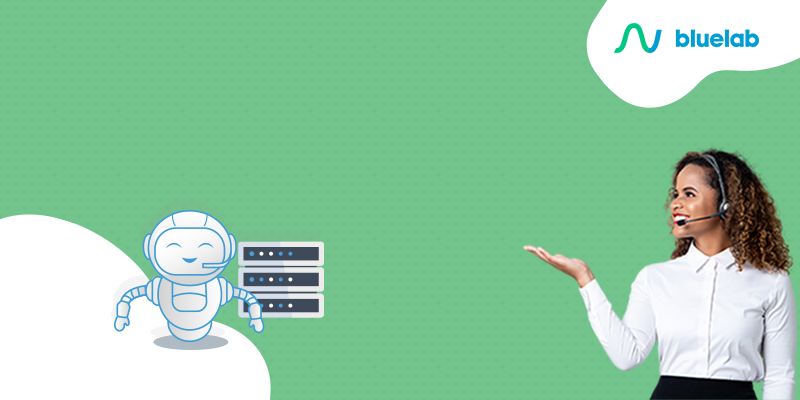According to a study by Infobip, one in four people have already used chatbots for customer service in banking apps, stores, or e-commerce. ...
Read more
Creating Bots Is Easy – Scaling Them Is a Different Story.
10/08/2021
Customer service bots are conversational robots, also known as chatbots (for text) and voicebots (for voice), capable of interacting with humans through platforms like WhatsApp, Facebook Messenger, Telegram, phone, and others.
Equipped with Artificial Intelligence, these customer service bots can also be integrated into your website’s chat to answer client questions and resolve simple issues, freeing up your human agents to focus on higher-value tasks.
According to Gartner, in 2021, 15% of all customer service interactions will be completed using AI—with significant adoption of bots. In other words, bots are a trend and will be increasingly used by companies for customer service, being present at every stage of the customer journey.
Bots are tasked with solving simple problems. With a text or voice bot, your business can speed up customer service, free up agents’ time, reduce staffing costs, engage, retain, and build customer loyalty, identify failures, and even generate data on customer interactions.
Moreover, with a bot, your company can provide customer support 24 hours a day, 7 days a week, year-round. Therefore, a bot can be a strategic tool for your company’s customer service.
However, after creating a bot, it is necessary to ensure its constant evolution so that it becomes a robot capable of solving customer problems more efficiently and with greater satisfaction.
In this article, you’ll learn the importance of creating a bot for your business and how to scale it with a few simple but valuable tips. Enjoy your reading!
How to Scale Your Bot?
After creation, managing the bot is essential for its learning and evolution. Check out some valuable tips for scaling it below.
Perform a Financial Analysis
It is crucial to know how many interactions the bot handles per month on average, as well as the time and money invested in the bot compared to a human agent. In addition to measuring financial returns, this analysis can encourage other departments in the company to invest in the solution.
Define Approval Stages
Establishing and implementing approval stages ensures that specialists from different areas of the company approve or reject each process before it is implemented, based on their expertise. For example, the business owner should be involved in these approvals.
Have a Clear Focus for Your Bot
Your bot must have a well-defined purpose to operate strictly within its context, aligned with the objectives set by the company before development.
If your bot is too broad, it may stray from the specific topics that are usually the reason for its existence.
If your bot is simply intended to build customer relationships, you can still make it generalist while collecting, storing, and processing the data it generates.
Rely on a Multidisciplinary Team
In addition to developers, it is crucial to involve professionals who are experts in the subjects your bot addresses with customers and those who understand the technical aspects of the service process.
Collect All Possible Data
Every conversation your chatbot or voicebot has with a customer generates data that, if well-utilized, can be crucial for its evolution. Therefore, your business must have tools to collect, store, and analyze this information.
This data collection and analysis can identify the success level of your customer service bot and pinpoint areas for improvement that need to be adjusted for increasingly accurate and agile service.
You can also ask customers what they think about your bot, gaining insights directly from the source—the user—so you can improve their experience.
Continuously Evaluate Performance
Precision, interaction, rejection, retention, resolution, conversion, satisfaction, fallback, session time, response time, and more. Various metrics must be constantly evaluated to determine whether your bot is productive, helping your customers with what they need or want.
Read more: What Are the Main Performance Indicators (KPIs) for a Bot?
It was a pleasure to have your company. See you next time!